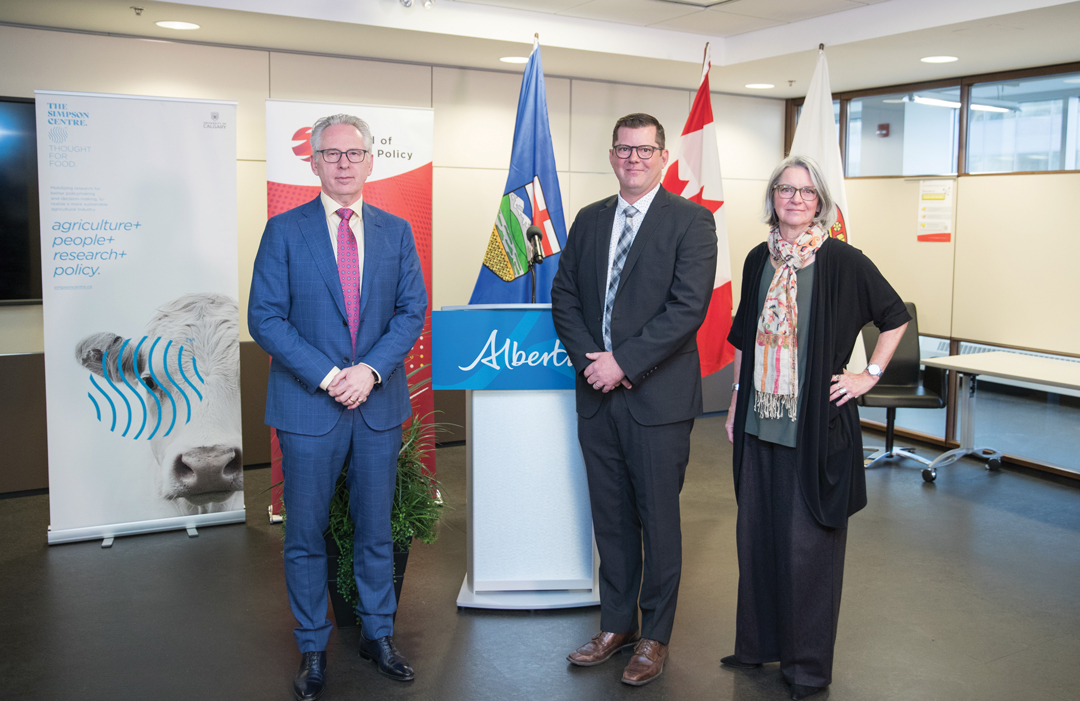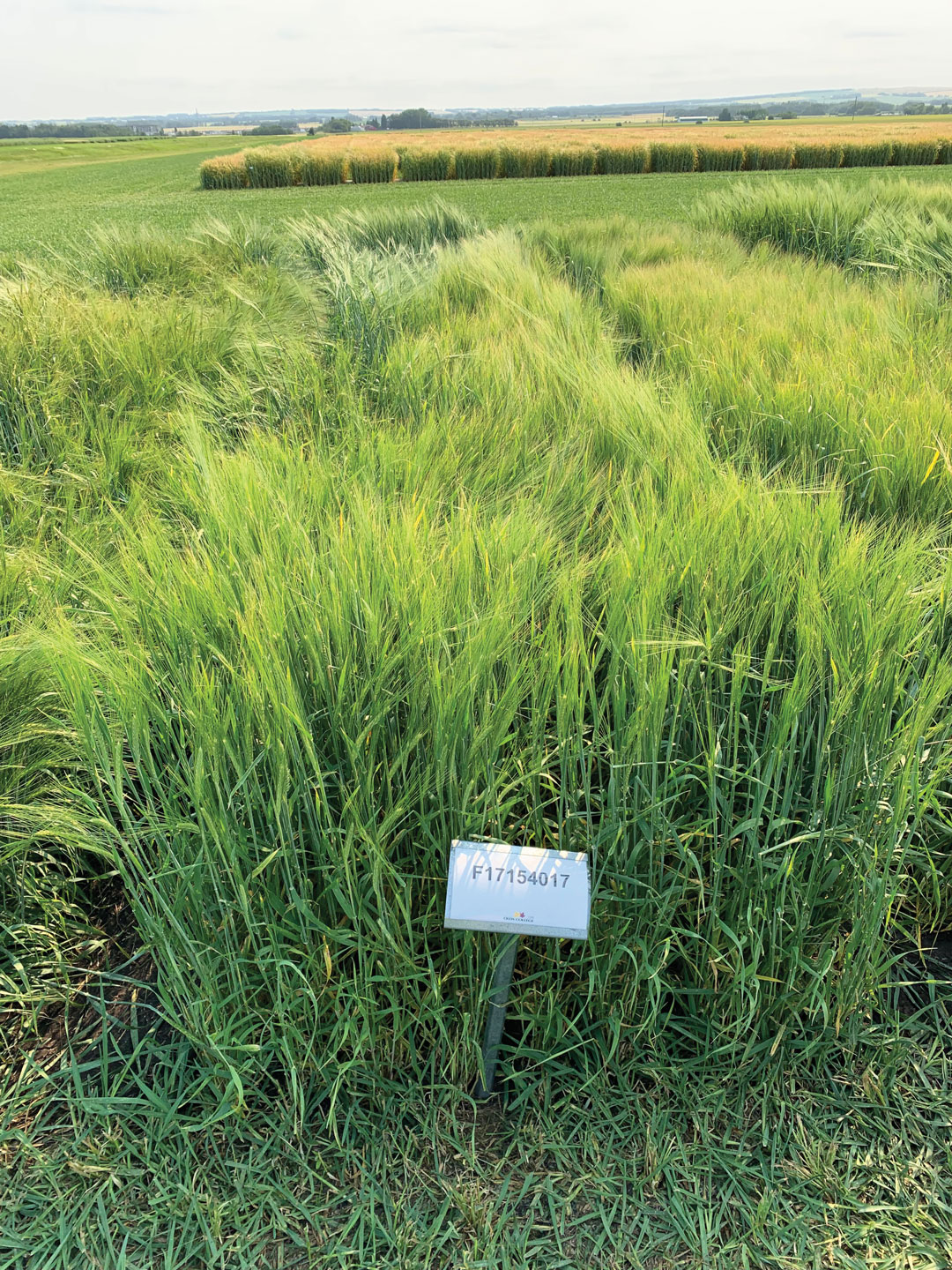DIGITAL ENCOURAGEMENT
BY ADELINE PANAMAROFF • PHOTO COURTESY OF ADRIAN SHELLARD
The University of Calgary’s Simpson Centre for Food and Agricultural Policy launched its three-year Alberta Digitalization Agriculture (ABDIAG) program project in October 2023. Thanks to $1.2 million provided by Alberta Agriculture and Irrigation, the research and farmer education initiative will examine how existing digital technologies can more broadly and effectively be used by the agriculture sector.
Its intent is to spur the creation of policies and incentives that encourage farmers to more widely adopt digital technologies. To complement this, it also calls for better rural internet access. Greater data collection by farmers, the project outline states, will generate greater transparency for supply chain stakeholders who can then better market their products to consumers who want to know where and how their food was grown.
ABDIAG was established on the heels of the Simpson Centre’s Carbon Program, which was completed last year. The three-year initiative studied agricultural greenhouse gas emissions and formulated policy recommendations. The reduction of carbon production and greater water-use efficiency underpin the program. “We identified that one of the levers to make agriculture more efficient was to digitize more of the operations,” said Simpson Centre director Guillaume Lhermie. “The question that we had is why some [technologies] are very much utilized and why some are not.”
This latest project will first assess commercially available digital technologies. This includes sensors, the onboard systems used by equipment such as tractors and drones as well as the software applications that collect such data. The survey results will then be taken to farmers, agricultural supply chain representatives and policymakers for feedback. A series of roundtable discussions and interviews will assess where and why the available technologies have been less widely adopted than expected.
Farmers may have social or economic reasons for their resistance to digital technologies, said Lhermie. These factors may include lack of government financial incentives for investment in such technologies, concerns about data privacy or lack of internet connectivity. Certain farmers may also simply be uncomfortable with the technical knowledge required to operate digital systems. “We want to study all of that together to make recommendations to policymakers to form appropriate policies to nudge ag-tech adoption in general,” he said. Adoption of technology has been less an issue in broadacre farming, he added, while lack of uptake remains more prevalent in the livestock sector.
Once barriers to adoption are identified, a series of data literacy workshops will be held with farmers to help them improve their operational performance and financial management.
The digitization of agricultural operations on crop and ranchland has been widely proven to boost return on investment, said Lhermie. Just as digital processes have improved the use of soil and weather data, the utilization of AI in farm systems stands to produce similar benefits. The ABDIAG will better illustrate the potential value in broader adoption of the technologies now available to farmers. This should help minimize investment risk, reduce time spent on administrative tasks, improve financial and production performance and increase profit.
The project will conclude in June 2026 with the release of multiple reports and policy recommendations.







Comments